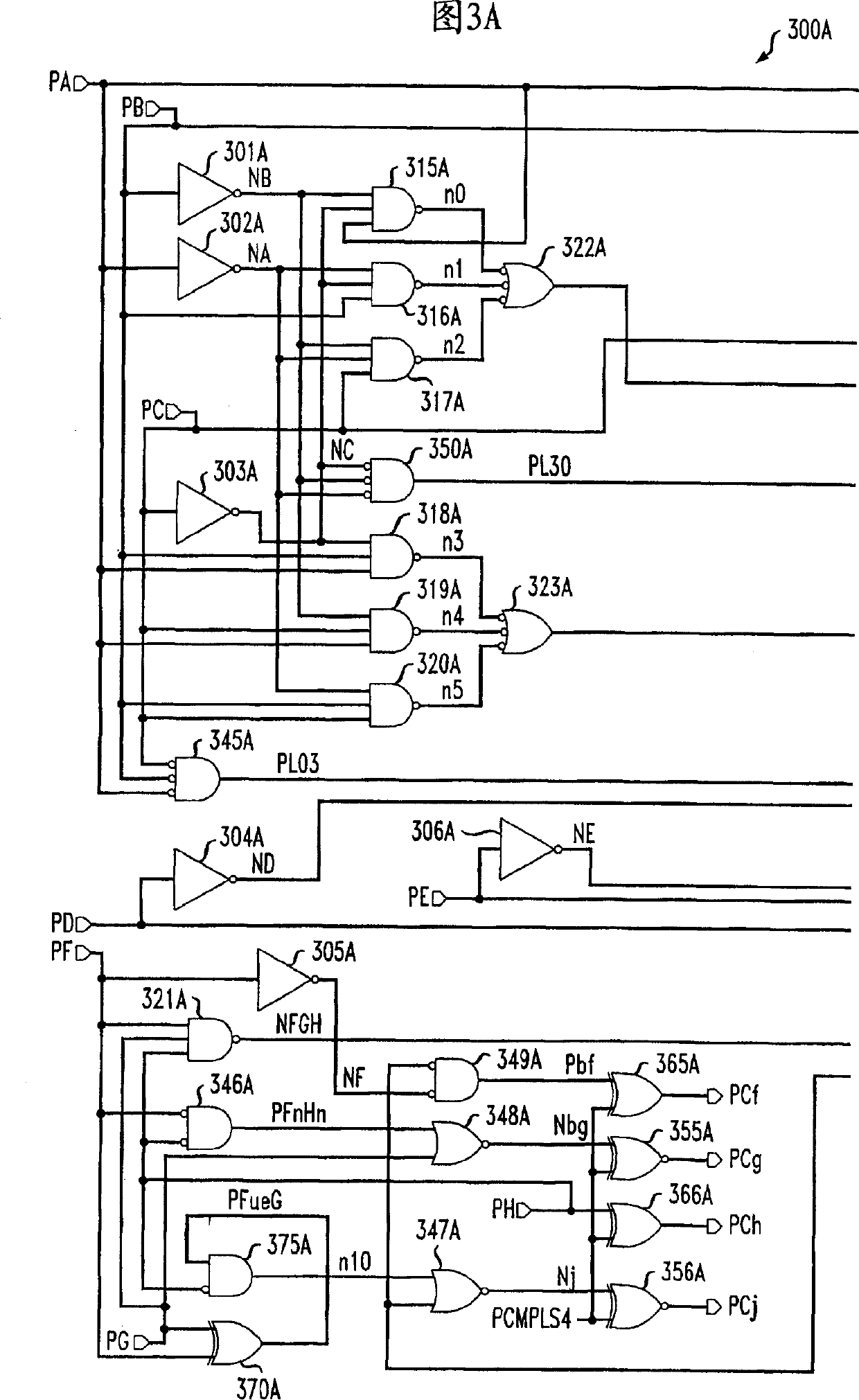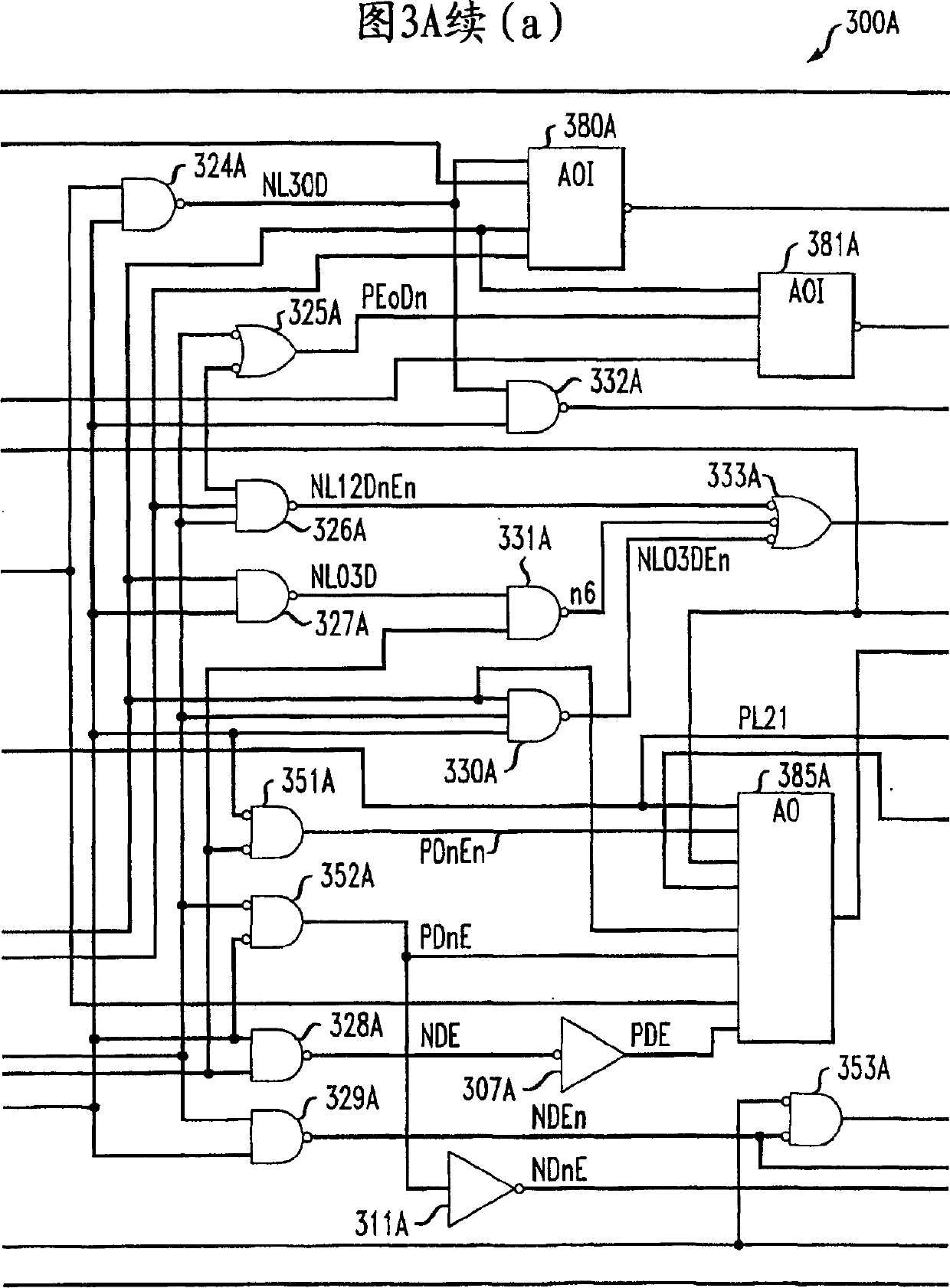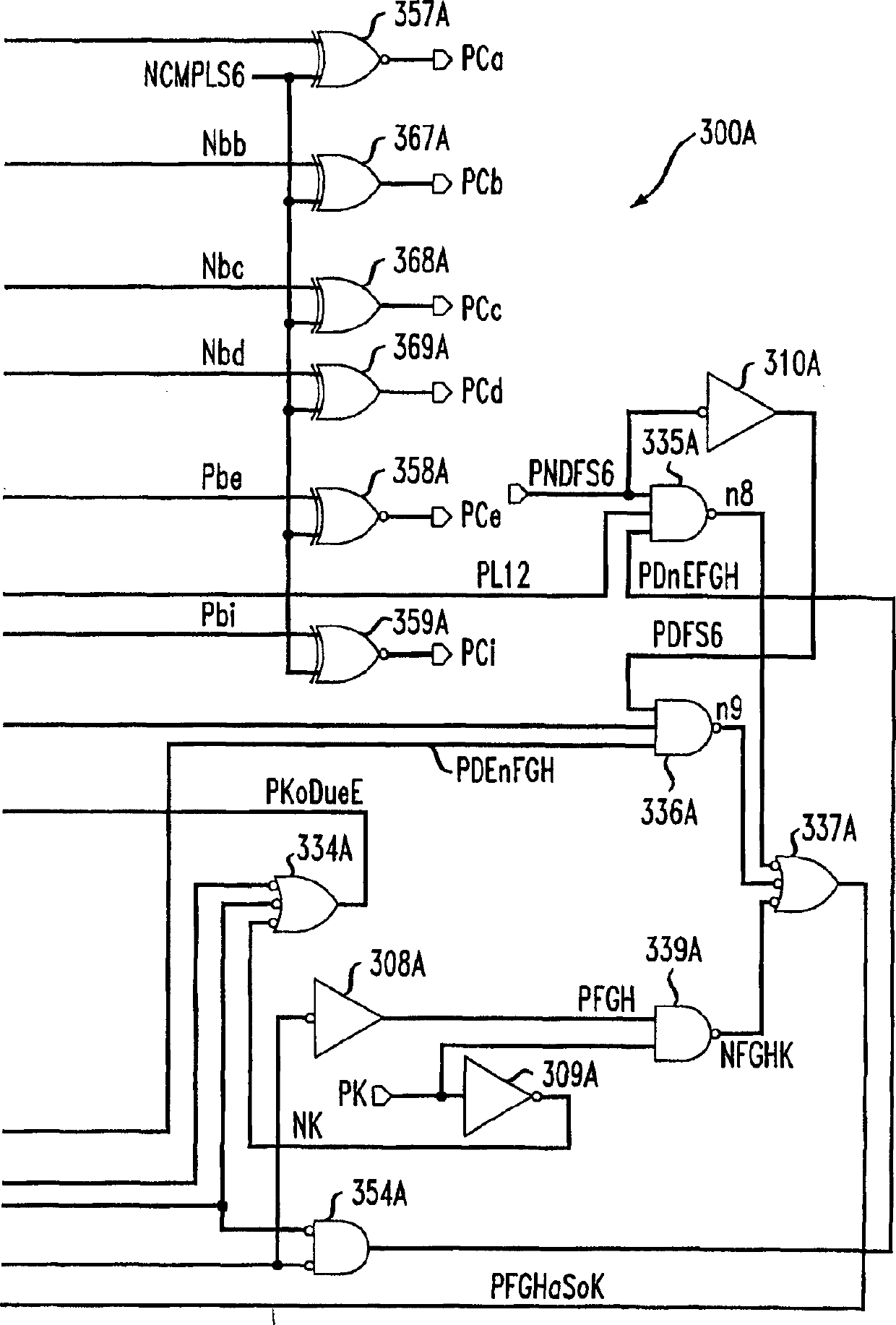8B/10B encoding and decoding for high speed applications
A technology of bit coding and coding bits, which is applied in the direction of code conversion, synchronization/start-stop system, individual digital conversion, etc., and can solve problems such as increasing the speed of encoding and decoding
- Summary
- Abstract
- Description
- Claims
- Application Information
AI Technical Summary
Problems solved by technology
Method used
Image
Examples
Embodiment Construction
[0031] The present invention goes beyond that disclosed in US Patent No. 5,245,339 and US Patent No. 4,486,739 by the following improvements. A new class of vectors is developed for mapping from and to the encoding domain, which will enable encoding and decoding equations with generally shorter latencies. The 8B / 10B encoding itself has not changed. Inequalities in the encoding and decoding processes are handled by separate rather than shared classifications and require only a small amount of additional circuitry. In US Patent No. 4,486,739, a shared taxonomy is employed. While conventional circuits provide running disparity with encoded or decoded data at the end of a byte or block of bytes, the present invention has the advantage of not requiring immediate knowledge of running at the beginning of the encoding or decoding and error checking process. Advantages of non-equal polarity. Thus, instead of disparities at the end, disparities at the beginning of the current byte al...
PUM
 Login to View More
Login to View More Abstract
Description
Claims
Application Information
 Login to View More
Login to View More - R&D
- Intellectual Property
- Life Sciences
- Materials
- Tech Scout
- Unparalleled Data Quality
- Higher Quality Content
- 60% Fewer Hallucinations
Browse by: Latest US Patents, China's latest patents, Technical Efficacy Thesaurus, Application Domain, Technology Topic, Popular Technical Reports.
© 2025 PatSnap. All rights reserved.Legal|Privacy policy|Modern Slavery Act Transparency Statement|Sitemap|About US| Contact US: help@patsnap.com



